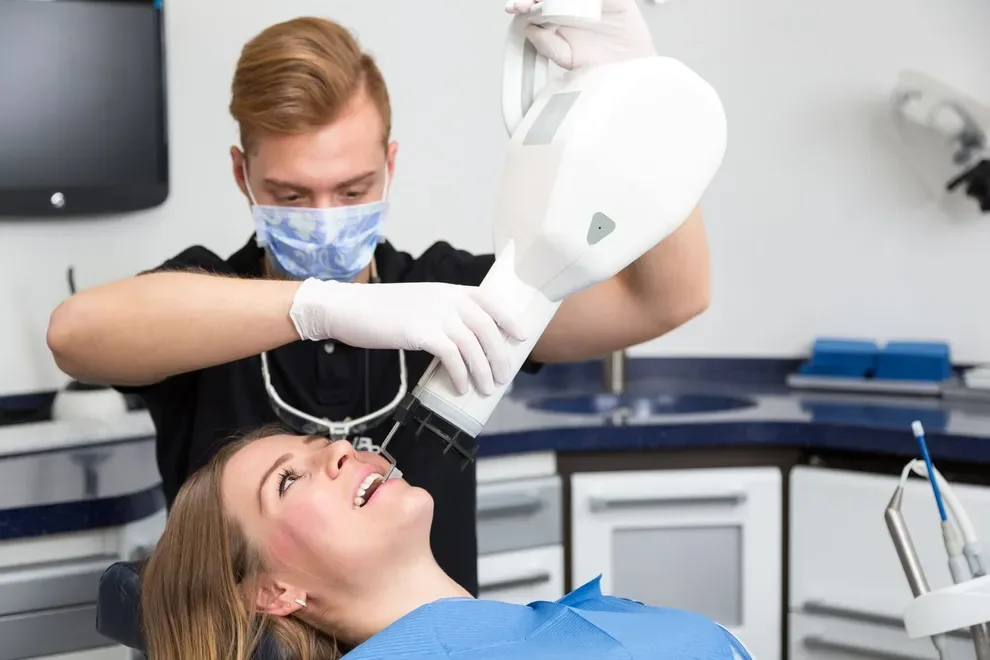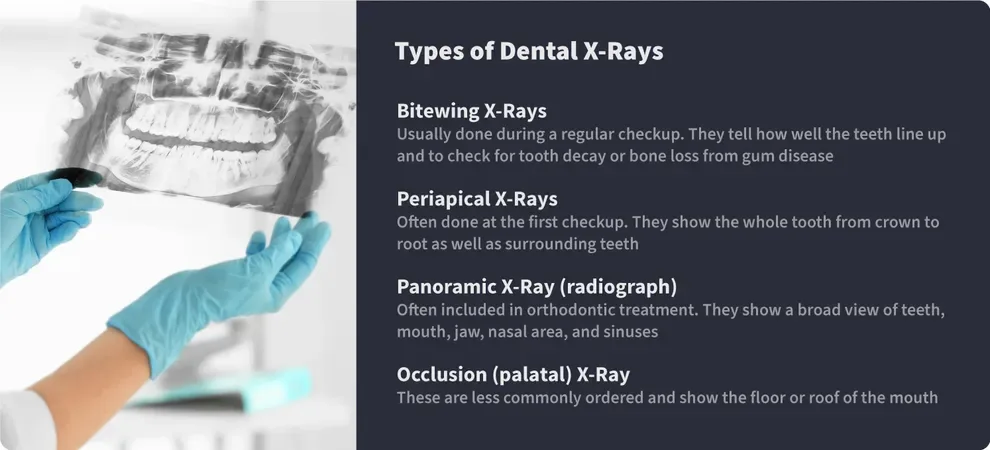What Do Dentists Charge for X-Rays? Is It the Same Everywhere?

Table of Contents
- Typical Dental X-Ray Costs
- Insurance & Dental X-Rays
- Expected Out-Of-Pocket Costs
- References
Dental x-rays can cost anywhere from $10 to more than $200. The costs vary based on your specific dentist office and geographical location.
The biggest influencer on the cost of dental x-rays is the type and extent of the x-ray needed and taken. For example, bitewing x-rays can cost as low as $10 for a set, while panoramic x-rays can cost upwards of $200.
Dental x-rays are an important part of your dental treatment and can help to diagnose oral conditions, including cavities, and oral diseases. Insurance will generally cover at least part of necessary dental x-rays, but there may be a cap on frequency and price.
Be sure to discuss the total expected expenses of your dental visit prior to the appointment, so you can be aware of any potential out-of-pocket expenses and plan accordingly.

Typical Dental X-Ray Costs
When you first visit a dental office as a new patient, they are going to recommend x-rays. This can help them to see if you have any cavities forming, other potential oral issues, or diseases that are not visible from an oral exam.
They will likely ask you every year or two if you want to repeat them, as the typical schedule for x-rays is about every 18 months to 2 years. If you do not have any preexisting conditions and are an adult with healthy teeth, you likely will not need to repeat your dental x-rays quite that often. In many cases, you can wait closer to three years. Children often need dental x-rays more frequently.
Dental x-ray costs depend on the type of x-ray you need.
These cost between $10 and $25 for one, and $20 to $100 for an entire set. They are usually done during a regular checkup to see how well the teeth line up and to check for tooth decay or bone loss from gum disease.
These cost between $15 and $30 for one, and $85 to $250 for the entire mouth. These are often done at the first checkup and can show the whole tooth from crown to root as well as surrounding teeth.
These cost between $60 and $150 on average. They show a broad view of teeth, mouth, jaw, nasal area, and sinuses. They are often included with orthodontic treatment.
These cost between $20 and $40 each. They show the floor or roof of the mouth, and they are less commonly ordered.
Dentists generally take x-rays for diagnostic purposes, because they want to identify any oral health conditions their patients possibly have at the time.
Insurance & Dental X-Rays
Dental x-rays are considered to be part of routine dental care and treatment. As such, they are typically at least partially covered by insurance. They are often completely covered with the exception of a copay. There are often limits on frequency.
For example, insurance will often cover up to eight bitewing x-rays per year, but only one panoramic once every three years. You will need to check with your specific provider to see what your plan and insurance policy cover.
Expected Out-Of-Pocket Costs
Dental insurance coverage often depends on where you go for dental treatment. In-network providers are generally covered more fully than an out-of-network provider will be. Dental discount plans also often offer discounts on dental x-rays if you use a contracted in-network provider for your services.
Out-of-pocket expenses for dental x-rays usually means a co-pay that can range from $5 to $50, depending on your insurance plan specifically. The dentist or dental hygienist will inform you before taking x-rays. Check with your plan to see your coverage amounts before getting the x-rays so you are aware of your expected expenses.
Dental x-rays can end up saving you a lot of money on medical expenses down the line, as they can help to catch problems early. Your dentist can then treat issues before they require bigger and more invasive (and expensive) methods.
